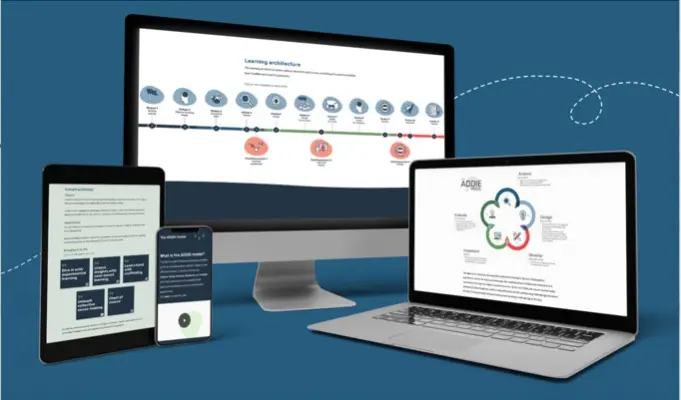The Future of Training: Why Blended Learning Solutions Are More Important Than Ever
Evolution of training methods
Training methods have come a long way, evolving with the advancements in technology. Today, blended learning solutions are gaining importance due to their effectiveness in combining online materials with traditional face-to-face instruction. This approach allows for more flexible learning schedules and personalized learning experiences, catering to different learning styles. Blended learning is proving to be more engaging and interactive, enhancing knowledge retention and overall performance.
Understanding blended learning solutions
Blended learning solutions combine traditional in-person teaching with digital resources, providing a flexible and interactive learning experience. Here are some key points to understand about blended learning solutions:
- They offer a mix of face-to-face instruction and online learning, allowing for personalized learning paths and self-paced study.
- Blended learning solutions can incorporate various digital tools such as videos, simulations, and interactive quizzes to enhance the learning experience.
- By combining different teaching methods, blended learning solutions cater to different learning styles and preferences, making education more engaging and effective.
- These solutions are becoming increasingly important in the future of training, as they adapt well to remote or hybrid learning environments and promote continuous learning and skill development.
Benefits of blended learning
Blended learning mixes traditional classroom teaching with online learning. It offers flexibility for students to study at their own pace. It caters to different learning styles, making education more engaging and effective. Incorporating technology enhances students’ skills for the digital era. Blended learning enables collaboration among students and teachers. The combination of face-to-face interaction and online resources creates a dynamic learning environment.
Role of technology in training
Technology plays a crucial role in modern training methods. Blended learning solutions, which combine traditional in-person training with online learning, are now more essential than ever. They allow for interactive and engaging training experiences that cater to different learning styles. Online tools and platforms enable easy access to training materials, flexibility in scheduling, and opportunities for self-paced learning. Incorporating technology in training also enhances collaboration among participants, providing a dynamic and interactive learning environment.
Blended learning vs. traditional methods
Blended learning mixes online and in-person training to offer a flexible and interactive learning experience. Here’s why it’s gaining significance over traditional methods:
- Engagement: Incorporating technology makes learning more engaging and interactive.
- Flexibility: Blended learning allows learners to access materials at their convenience.
- Cost-effective: It reduces expenses related to travel and accommodation for in-person training sessions.
- Personalisation: Tailoring content to individual needs is easier with blended learning.
Implementing blended learning solutions
To implement blended learning solutions, start by combining online learning with in-person training. Ensure the online component is interactive and engaging. Utilize resources like videos, quizzes, and discussion forums. Incorporate face-to-face sessions for hands-on activities and group discussions. Blended learning allows flexibility and personalized learning experiences. It enhances retention and engagement among learners.
Customization and flexibility in training
Customization and flexibility are crucial in training. Blended learning solutions offer the ability to cater to individual learning styles and pace, ensuring a more effective learning process. They allow for personalized learning paths, where each individual can focus on areas they need to improve without being held back by a one-size-fits-all approach. Additionally, the flexibility of blended learning enables learners to access training materials at their convenience, making it easier to balance training with other commitments.
Measuring the effectiveness of blended learning
To measure the effectiveness of blended learning, companies can use various methods such as surveys, quizzes, assessments, and performance evaluations. These tools help assess employees’ knowledge retention, skill development, and overall satisfaction with the training. By gathering feedback through these assessments, companies can identify areas for improvement and make necessary adjustments to enhance the effectiveness of their blended learning programs.
Case studies showcasing success
Case studies play a significant role in demonstrating the effectiveness of blended learning solutions. They provide real-life examples of how organizations have successfully implemented these training methods to improve employee performance and achieve their learning objectives. By examining these success stories, you can gain valuable insights into the benefits of using blended learning in various industries and contexts. These case studies help highlight the impact of personalized learning paths, interactive content, and the flexibility of online and offline learning components in achieving training goals.
Conclusion: The future landscape of training
Blended learning solutions are becoming increasingly vital in shaping the future of training. The combination of traditional classroom methods with online resources offers flexibility and personalized learning experiences. This approach adapts to the evolving needs of learners and the demands of a digital world. By integrating technology with face-to-face interactions, blended learning enhances engagement and knowledge retention. Embracing this methodology is key to staying relevant and effective in the ever-changing landscape of training.
The Hungry Minds group provides blended learning services across Australia. With team members in Melbourne, Sydney, Brisbane and Perth – We will enable your people to engage, learn and perform.
Contact Details
Office
E: [email protected]
Ph: 1300 528 736
Michael Peart
E: [email protected]
Ph: 0434 075 231
Bianca Schimizzi
E: [email protected]
Ph: 0416 013 623

